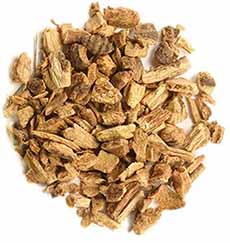DRINKS: Hella Bitters & Soda
|
Ever since we discovered bitters in college, we’ve regularly enjoyed bitters and soda—heavy on the bitters. Using Angostura, the only brand most people knew at the time, it added a reddish color to the club soda, with a very spicy ginger flavor. We called it “unsweetened ginger beer.” We often have bitters and soda with a big meal, because bitters are a digestif (more about that below). Also, when we’re about to have a big meal, we prefer not to have a cocktail beforehand, electing to wait for the wines to come. While entertaining is limited this year, going into holiday season we like to seek out new and special treats for our guests—and ourselves, of course. One of our beverage picks is Hella Bitters & Soda. Hella Cocktail Co. was one of the leaders in the creation of the craft bitters category. It has grown to sell premium, non-alcoholic mixers as well. Hella Bitters & Soda, new in 2020, has quickly gained a following of people who enjoy it after work, or for all-day drinking instead of a soft drink or plain sparkling water. Bitters are a flavor extract made by infusing bitter roots, bark, spices, fruits and botanicals. They have long been used to stimulate healthy digestion. There’s more about them below. Hella Bitters & Soda is a specialty soft drink, for sure; but one with quite an allure for people who want something special and refreshing. They don’t want alcohol—or don’t want another glass of it. The 12-fluid-ounce cans hold carbonated water that is blended with a heavy dash of bitters—and added flavors in three of the five varieties. The result is a serious, unsweetened adult soda or a cocktail mixer with heavy aromatics and sophisticated bitterness. Hella launched the Bitters & Soda line with two flavors: You can drink Hella Bitters & Soda from the can, as you work or watch television; drink it on the rocks (photo #2); or from a tall glass with citrus slices or other garnish (photo #3—we’ve used stalks of rosemary and thyme for a nice aromatic counterpoint. If you’re looking for something new and different—and only 10 calories except for sweetened Spritz Aromatic—take a look at Hella Bitters & Soda. And if you want to “mix your own,” you can buy great bitters from Hella (photo #4) to add to your own seltzer: Apple Blossom, Aromatic, Chili, Citrus, Eucalyptus, Ginger and Mexican Chocolate. If you need gifts for people who drink a lot of club soda, consider them as a gift. Gentian is a tincture made from the gentian root, a plant that is popular in many cocktails and the South of France, where it is considered the “King of Bitters.” It is extracted from the root of a flowering plant, Gentiana lutea, a species of gentian native to the mountains of central and southern Europe (photos #5 and #6—there are some 400 species of the gentian plant). The extract is extremely bitter and potent, and has a very long history in medicine. The story is that King Gentius of Illyria (180-67 B.C.E.) is said to have given the herb, later named after him, to his army to cure them of a mysterious fever [source]. It has long been used as a bitter flavoring for alcoholic drinks. In Germany and Switzerland, gentian was used to add bitterness to beer before the introduction of hops. It was also used in an aperitif at dinner parties to support digestion after the big meal. Gentian is the chief flavor in vermouth, in the Angostura brand of bitters, and in the American soft drink Moxie. Bitters are an extract of bitter roots, herbs, fruit and spices. There are as many recipes as people who want to make them. Bitters contain many powerful plant extracts that impart anti-inflammatory, anti-microbial and anti-gas (in the case of digestion) health benefits. Millennia before bartenders—and Dr. Siegart—discovered them, bitters were as a remedy for an unsettled stomach and other medicinal needs. Formally known as digestive bitters, they support digestive function by stimulating digestive juices, like stomach acid, bile, and enzymes to break down food naturally. This also abets the absorption of foods’ nutrients. Angostura bitters was originally used as a digestive tonic and recommended as an addition to just about every food. It was first made in 1824 in Angostura, Argentina (now Ciudad Bolivar), under the auspices of a physician, Dr. J.G.B. Siegart, who was the Chief Surgeon at the U.S. Military Hospital. |
|
|
|
|
||








